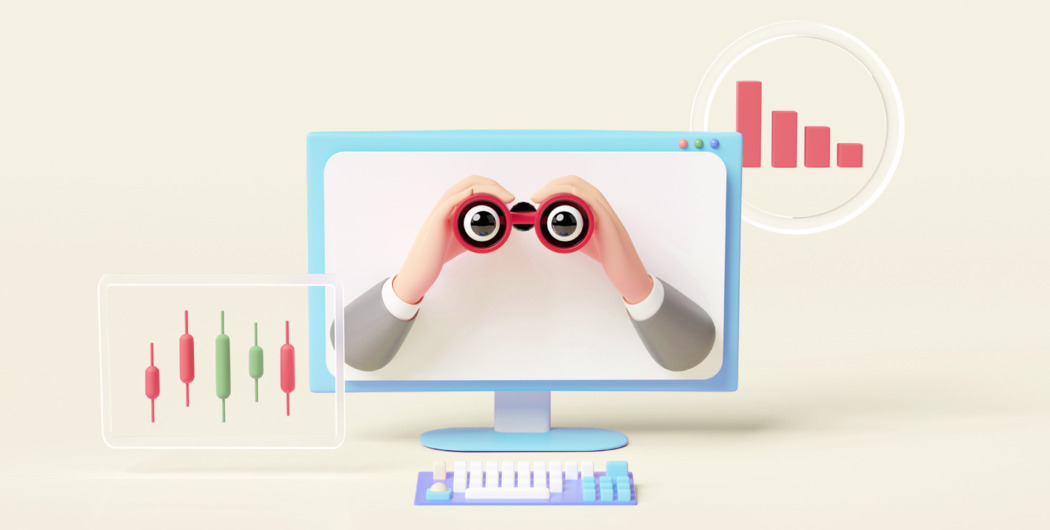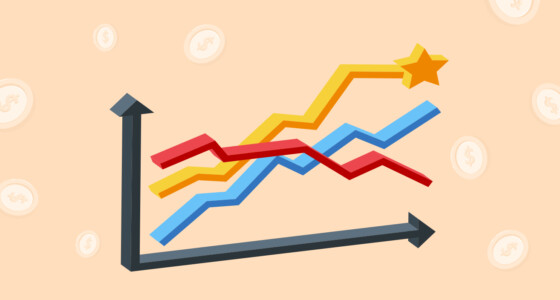

In some contexts, the terms “trader” and “investor” can be used interchangeably. But this can create confusion among beginners, especially when they haven’t yet decided which term describes them best.
In the early stages of the pandemic, India was adding 400,000 trading accounts every month. Since then, the total number of trading entities has grown to over 2.6 million. But before you join their ranks, you should decide which approach suits you more – trading or investing.
Difference 1: A day in the life
A trader spends their day looking at charts and analyzing price action. Some people believe traders are glued to their screens all day long, which isn’t necessarily the case. Yes, because of a higher frequency of trades, a lot of time is spent behind a screen. But there are different trading styles that require more or less effort and active involvement.
An investor spends their day researching companies’ strengths, weaknesses, and growth prospects. They are less concerned about daily price actions (if concerned at all). Their interest lies in the long-term perspective. They don’t spend their day making trades, but studying fundamentals takes a decent amount of screen time.
Difference 2: Possible returns
The potential for returns in trading is generally higher, which comes with a higher risk (more on the risks later). Traders seek returns from each trade. If they have a streak of good trades, their combined return will likely be higher than a typical conservative investment portfolio. While investors aim for annual returns of 10%-15%, traders might seek a 10% return on a monthly basis. However, it’s important to take into account broker commissions per trade that eat away some of the gains.
Investors can receive returns in the form of quarterly dividends if they have dividend-yielding stocks in their portfolios. As for other assets or stocks without a dividend, they can become a source of additional income only when investors decide to sell them at a higher price than originally purchased.
Difference 3: Time horizons
Traders think in terms of days, sometimes even shorter — weeks, hours, or minutes. Some scalpers go to very low timeframes like a 1-minute chart. Many traders don’t have too many open positions at any given moment because their timing for exits must be very precise. After closing, they move on to the next target.
Investors generally have a long time horizon — years and even decades. Their portfolio consists of assets that hold and appreciate in value over a long period, such as stocks, indices, and commodities. These assets may not have the best performance in the short term but, if chosen correctly, will increase in value over time due to strong fundamentals.

Difference 4: Technical vs. Fundamental analysis
Traders usually base their strategies on technical analysis, which uses chart data to predict future price movements. They examine and analyze the past trends and changes in the price of an asset. If they analyze stocks, they also study the historical information of a company. Some of the most popular technical analysis tools include:
- Indicators (RSI, MACD, Stochastic, etc.)
- Moving averages
- Support and resistance levels.
Investors mostly use fundamental analysis — a methodology of studying factors that determine an asset’s intrinsic value. They want to determine whether the asset is trading above or below its intrinsic value. Areas of study may include:
- Balance sheets
- Cash flow statements
- Metrics like EPS, P/E, P/B
- Economic drivers
Difference 5: Risk tolerance
Both traders and investors can have a high or low risk tolerance and develop aggressive or conservative methods. It all depends on personal preference.
But to generalize, traders gravitate to high-risk, high-return strategies. They risk incurring more losses, which they may recover from the next day. For investors, there is also a lot of uncertainty. But there is generally less at stake because assets with high intrinsic value are not as susceptible to market shifts as high-risk financial instruments.
Which one are you?
Now you need to determine which approach suits your personality and financial goals. If you’re comfortable with the risks, trading can be exciting and very regarding. If you don’t want to take on a huge commitment, a slow-and-steady investing approach can be for you.
And remember: you don’t have to be just one. Your involvement in financial markets can be as diverse as you want.









